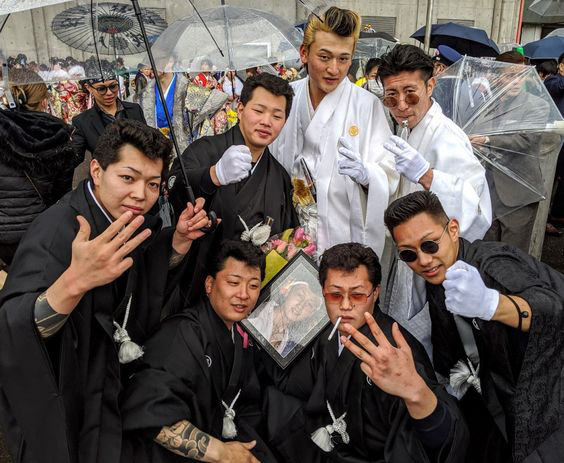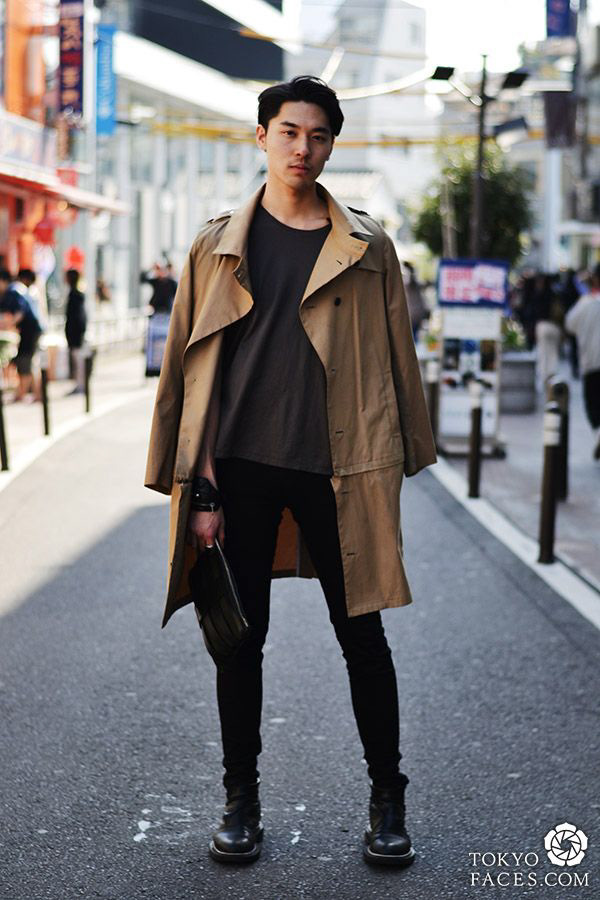From Samurai to Salaryman: The Shifting Face of Japanese Masculinity
The notion of masculinity in Japan is a complex issue that has evolved over centuries, influenced by a variety of historical, cultural, and social factors. To fully understand this phenomenon, it is essential to explore its historical context and how it differs not only from its earlier versions but also from Western conceptions of masculinity.

A Look into the Past
Masculinity in Japan has been shaped by a long history of cultural traditions, codes of conduct, and gender roles deeply rooted in Japanese society.
Since ancient times, the figure of "otoko no tame no bushi" or "masculine warrior" has been revered, an idealization of masculinity promoting bravery, loyalty, and physical strength. This ideal was reflected in the samurai, who represented the military and social elite during Japan's feudal period.
However, masculinity in Japan is not limited solely to the warrior aspect. During the Edo period (1603-1868), the concept of "nanshoku" or "male-male love" was socially accepted and considered a legitimate expression of masculinity.
This practice, involving romantic and sexual relationships between men, challenges traditional Western notions of masculinity, which are often exclusively associated with heterosexuality and virility.

The Meiji period (1868-1912) marked a significant shift in the conceptualization of masculinity in Japan. With the emperor's restoration and the country's modernization, a new image of masculinity based on Western values of rationality, discipline, and hard work was promoted, which only intensified with World War II.
This classical masculinity is now associated with the "salaryman," the salaried businessman who sacrificed his personal life for professional success and the well-being of his family.
In recent years, however, all of this has changed. Today, younger generations value kindness and knowing when to yield as the two greatest qualities for a man, in addition to self-confidence and reliability.
But... What about Today?
In recent decades, Japan has experienced a series of socioeconomic and cultural changes that have posed significant challenges to traditional conceptions of masculinity.
One of these challenges is the growing phenomenon of the "soushoku danshi" or "herbivore man". These men, in contrast to the traditional ideal of masculinity, are perceived as passive, unambitious, and less interested in romantic relationships or marriage.
Many of them reject traditional male norms, taking on household chores or displaying greater female dominance.
The herbivore man has been attributed to a combination of factors, including gender inequality, economic recession, and a shift in social values towards individuality and self-expression.
Furthermore, social pressure on Japanese men to adhere to traditional standards of masculinity can have negative consequences on their mental health.

The expectation to be successful providers and maintain economic stability can lead to high levels of stress and anxiety, especially in a competitive and demanding work environment like Japan's.
This has led to an increase in cases of depression, suicide, and other mental health issues among Japanese men.
A very important aspect is also the differentiation of what is perceived as masculine depending on the region of the country.
The most obvious example of this is in Kyushu, where they have almost their own image of masculinity differentiated from the rest of the country ("Kyushu danji"): strong, stubborn, rebellious, dominant, inflexible, a drinker, or even sexist.

However, the image of the "Man from Kyushu" is increasingly being questioned, especially among the younger generations.
It's Inevitable to Compare
Although there are similarities in conceptions of masculinity between Japan and the West, especially in their respective foundations, there are also significant differences reflected in the finer details.
In the West, masculinity tends to be more closely linked to individuality, competitiveness, and independence. Open expression of emotions, risk-taking, and assertion of power and authority are valued.
In contrast, in Japan, masculinity is often characterized by moderation, harmony, and conformity to social norms. Japanese men are expected to be reserved in their behavior and show respect towards authority and tradition.
Another significant difference lies in the perception of male sexuality. While in the West, heterosexuality is emphasized as the dominant norm, in Japan, as mentioned earlier, there has historically been greater acceptance of sexual diversity, including practices like "nanshoku”.
However, in the modern era, with the influence of Western values and the rise of globalization, there has been a shift towards a more heteronormative view of masculinity in Japan.
Additionally, the concept of masculinity in Japan is closely related to a sense of duty and responsibility towards family and community. Japanese men often take on provider and protector roles, prioritizing the well-being of their loved ones over their own needs and desires.
This dedication to family is often reflected in the long work hours of the "salaryman" and their willingness to sacrifice leisure time for work.
A detail that is often overlooked but clearly reflects the differences in masculinity between the West and Japan is fashion.

From physical appearance to facial care, hairstyle, or the clothing many men choose to wear, such as bags, shoes with slight heels, or clothing that deviates from the norm, all of these blur the differentiation between men and women in the fashion world. This is why many Western women consider Japanese men to be effeminate.
While masculinity in Japan shares some similarities with Western conceptions, it also exhibits significant differences reflecting the diverse cultural and social influences of each region. Exploring these differences offers a deeper understanding of the diversity and complexity of male identities worldwide.
In conclusion, masculinity in Japan is experiencing a phase of transition and reassessment, influenced by a variety of social, economic, and cultural factors. While challenges related to traditional gender roles and social expectations persist, there is also a growing momentum towards a more diverse and inclusive vision of masculinity.
What is more than assured is that understanding the complexity and diversity of male experiences in different cultural contexts helps challenge stereotypes and restrictive gender norms, promoting greater equality and acceptance of diversity in all its forms.
